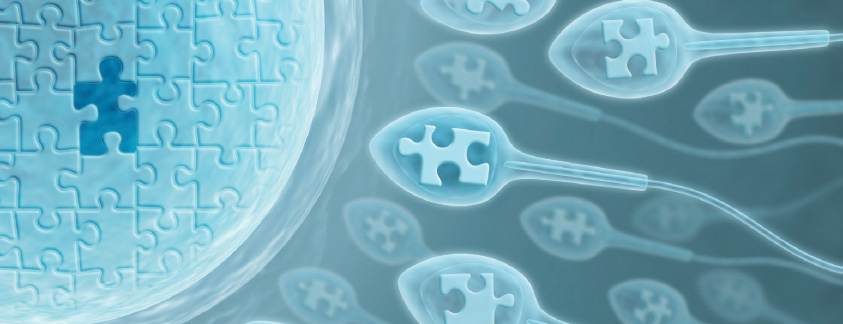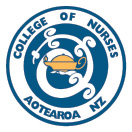Assets.yellow.co.nz








Making Education Easy
Issue 6 - 2014
Welcome to the 6th issue of Fertility Research Review
In this issue we review several studies investigating sperm quality. Many men are unaware that the use
of finasteride, a common treatment for baldness, reduces sperm counts. Fortunately for couples desiring fertility, sperm counts were shown to increase on cessation of finasteride treatment. Couples may also
need to reconsider use of lubricants as some are shown to have detrimental effects on sperm motility in an
in vitro study. Using IMSI for sperm selection increased pregnancy rates in older women in a prospective randomised study. Other studies reviewed this issue show increased pregnancy rates with ICSI preceded
by endometrial injury and in egg donor recipients with replete vitamin D levels. The mechanisms for these
influential factors are not yet understood.
We hope you enjoy our selection for this edition and your comments and feedback are welcome.
If you have colleagues or friends within New Zealand who would like to receive our publication, send us
their contact email and we will send them a copy of the next issue.
Dr Mary Birdsall
Fertility treatments and multiple births in the United States
Authors: Kulkarni AD, et al.
Summary: The increased use of fertility treatments in the United States has been associated with a
substantial rise in the rate of multiple births. The proportion of multiple births that were attributable to
IVF and non-IVF fertility treatments from 1997 through 2011 was estimated and compared with rates of
multiple births after natural conception. A total of 36% of twin births and 77% of triplet and higher-order births resulted from conception assisted by fertility treatments. The observed incidence of twin births
increased by a factor of 1.9 from 1971 to 2009. The incidence of triplet and higher-order births increased
by a factor of 6.7 from 1971 to 1998, but decreased by 29% from 1998 to 2011 when clinical practice guidelines for IVF had been developed. During this time there was a 70% reduction in the transfer of three
or more embryos for IVF (p<0.001).
Comment: Multiple pregnancies have been the dirge of the fertility world. This report estimates that
more than a third of all twins occur as a result of fertility treatments and more than three quarters of
all triplets. These multiple pregnancies are almost all avoidable with the adoption of a single embryo
Abbreviations used in this issue
transfer policy. Freezing technology has improved so that frozen embryos almost always survive
FSH = follicle-stimulating hormone
thawing and implantation rates are the same as fresh implantation rates. I would hope that the US
hCG = human chorionic gonadotropin
continues to see a decline in multiple births as a result of fertility treatments.
ICS = intracytoplasmic sperm injection
IMSI = intracytoplasmic morphologically selected
sperm injection
Reference: N Engl J Med. 2013;369:2218-2225
IUI = intra-uterine insemination
IVF = in vitro fertilisation
NS = not significant
OR = odds ratio
Fertility Research Review
Independent commentary by Dr Mary Birdsall,
BHB MB ChB Auckland; FRANZCOG MSc (Oxon)
Mary is the Medical Director of Fertility Associates' Auckland clinic and combines this with a
private gynaecology practice. She has a special interest in fertility preservation and the lifestyle
influences on fertility. Mary is the New Zealand representative to the Fertility Society of Australia's
IVF Directors Group executive and the editor of the book ‘Making Babies'.
a RESEARCH REVIEW publication
Fertility Research Review
Finasteride use in the male infertility population: effects on
In vitro effects of coital
semen and hormone parameters
lubricants and synthetic and
Authors: Samplaski MK, et al.
natural oils on sperm motility
Summary: Finasteride, even at low doses, may cause reduced sperm counts in some men. This prospective
Authors: Sandhu RS, et al.
study compared semen and hormone parameters before and after discontinuation of finasteride in 27 men
Summary: The effects of coital lubricants and oils
presenting for fertility evaluation. The mean dose of finasteride was 1.04 mg/day and the mean duration of
on sperm motility were evaluated in this in vitro
treatment was 57.4 months. Sperm counts increased dramatically for the majority of men after finasteride
study. Semen samples from 22 normozoospermic
discontinuation. There was an average 11.6-fold increase in sperm counts; no man had a decrease in
donors were incubated in modified human tubal
sperm count. Of the men with severe oligospermia (<5 M/mL), 57% had counts increase to >15 M/mL after
fluid control and in 10% Pre-Seed, Astroglide, and
finasteride cessation. Hormone parameters, sperm motility, and sperm morphology were unchanged after
KY products (Sensitive, Warming, and Tingling) and
cessation. The authors concluded that ‘finasteride should be discontinued in subfertile men with oligospermia,
baby, canola, sesame, and mustard oils. Total and
and used with caution in men who desire fertility'.
progressive sperm motility was evaluated before and at 5, 30, and 60 minutes of incubation. There
Comment: Finasteride is a commonly used medication for the treatment of male baldness and is often
was no significant decrease in sperm motility in
obtained from internet pharmacies. Most men are unaware that the use of finasteride may be associated
control samples. Astroglide, KY products (Sensitive,
with a reduction in sperm quality. This is a very useful study and suggests that men who are attempting to
Warming, and Tingling) and sesame oil incubation
conceive should stop finasteride. Cessation of the drug may cause an improvement in semen parameters
significantly decreased total and progressive sperm
particularly in men with a suboptimal semen analysis.
motility. Pre-Seed, canola oil and baby oil initially
decreased sperm motility, but total and progressive
sperm motility remained high. Mustard oil caused persistent hyperactivation of sperm with no decrease in motility and needs to be studied further. The authors concluded that ‘Pre-Seed and canola, mustard, and baby oils showed no deleterious effect and may be
Guiding your patient
considered sperm-friendly coital lubricants'.
every step of the way
Comment: Many couples are unaware that the
use of some lubricants may be associated with
a detrimental effect on sperm and hence reduce
the chances of conception. This study shows that
Pre-Seed has the least impact on in vitro sperm
motility. The best advice for couples who are
attempting to conceive, is to use no lubricant or if
necessary Pre-Seed, baby oil or canola oil appear
to be the lubricants of choice.
Fertility Associates
As New Zealand's leading provider of fertility diagnosis, support
and treatment, Fertility Associates is there for your patients every
step of the way on their journey to a family.
We've been helping New Zealand families for over 25 years with more than 14,000 babies born so far, and offer both private and publicly funded treatment. With over 50% of our patients successful within the first 12 months, the sooner they talk to us the better their chances of success. We have 17 clinics conveniently located throughout New Zealand, so making that first step is so much easier.
Visit our GP's only section on our website fertilityassociates.co.nz/gp or scan the QR code.
To contact us please call 0800 10 28 28
or click on a region for local contact details
132066 FER Every Step B NZ Doctor Advert Dec 2014 PRESS.indd 1
a RESEARCH REVIEW publication
Fertility Research Review
Increasing the probability of selecting
Subcutaneous progesterone versus vaginal
chromosomally normal embryos by
progesterone gel for luteal phase support in in vitro
time-lapse morphokinetics analysis
fertilization: a noninferiority randomized controlled
Authors: Basile N, et al.
Summary: The differences in cleavage time between Authors: Lockwood G, et al.
chromosomally normal and abnormal embryos were Summary: The safety, efficacy and tolerability of subcutaneous progesterone (Prolutex)
retrospectively analysed using a time-lapse system. A total of
were compared with vaginal progesterone gel (Crinone) for luteal phase support in
504 embryos undergoing preimplantation genetic screening
683 patients undergoing IVF. Patients were randomised to receive Prolutex 25 mg (n=339)
were analysed from 125 patients, including those with repeated
and Crinone 90 mg 8% gel (n=344) on the day of oocyte retrieval and daily for up to
implantation failure or recurrent miscarriage. Logistic regression
10 weeks. Prolutex was found noninferior to Crinone based on the ongoing pregnancy
analysis identified the interval between the time to 5 cells and
rate at 10 weeks of treatment (27.4% vs 30.5%; NS). Delivery and live birth rates were
time to 2 cells (OR 2.853; 95% CI 1.763–4.616), followed by the
equivalent between the two treatments (26.8% vs 29.9%). Implantation rate, pregnancy
length of the third cell cycle (OR 2.095; 95% CI 1.356–3.238)
rate, and early miscarriage rate for Prolutex were also similar to those for Crinone. There
as the most relevant variables related to normal chromosomal
were no differences reported for comfort of usage and overall satisfaction. Adverse event
content. These results were used to develop an algorithm to
profiles were similar and Prolutex was safe and well tolerated.
classify embryos from A to D and increase the probability for noninvasive selection of normal embryos. Each category exhibited
Comment: Luteal phase support with progesterone is necessary following the use of
significant differences in the percentage of normal embryos: A,
IVF drugs. Most clinics use vaginal progesterone which is sometimes continued into
35.9%; B, 26.4%; C, 12.1%; D, 9.8%.
the first trimester of pregnancy. Vaginal progesterone is associated with an unpleasant vaginal discharge which most women tolerate but would prefer an alternate option.
Comment: The latest tool in the IVF lab is time-lapse
This is a study looking at a daily subcutaneous injection of progesterone and appears
microscopy. This is where embryos being cultured in incubators
to show similar efficacy to vaginal progesterone. There was no difference in satisfaction
are photographed every 15 minutes. This information is then
scores suggesting that a better tolerated progesterone is still needed.
analysed to help improve embryo selection. This study shows that time-lapse microscopy may assist embryologists to
choose chromosomally normal embryos. The disappointing
feature however is that still only 36% of embryos in the most favourable group were normal.
A randomised controlled trial of intra-uterine
insemination versus in vitro fertilisation in patients
with idiopathic or mild male infertility
Authors: Elzeiny H, et al.
Influence of vitamin D levels on
Summary: IVF was found to be more successful and cost-effective than IUI using the
in vitro fertilization outcomes in
same doses of FSH in this randomised controlled study in couples with idiopathic or mild
male infertility for ≥1 year. All women (n=102) received the same dose FSH stimulation
Authors: Rudick BJ, et al.
protocol and those who developed two or three preovulatory follicles were randomised 3:1 to IUI (n=33) or IVF (n=10). IUI or IVF was performed 36 hours after hCG administration
Summary: The relationship between recipient vitamin D levels and
with single or double embryo transfer on day 2. The IVF group had a higher clinical
pregnancy rates in donor-recipient IVF cycles was retrospectively
pregnancy rate (40% vs 12%; p=0.04) and live birth rate (40% vs 6%; p=0.01) than IUI.
examined to elucidate the role of vitamin D in reproduction.
The cost per live birth was AU$8735 for IVF compared with $42,487 for IUI.
Vitamin D [25(OH)D] levels were measured in serum collected from 99 egg donor recipients before embryo transfer. Adjusted
Comment: This Melbourne-based study shows that IVF has a higher pregnancy rate
clinical pregnancy rates (defined by sonographic presence
and costs less per baby when compared with IUI in couples with unexplained or mild
of a heartbeat at 7-8 weeks of gestation) were lower among
male factor infertility. It also demonstrates one of the failings of IUI which is the high rate
vitamin D-deficient recipients compared with vitamin D-replete
of multiple pregnancies, with half of the pregnancies in the IUI group being multiples.
recipients (37% vs 78%). Live birth rates were also lower among
This is no longer seen in IVF programmes with the advent of single embryo transfers.
vitamin D-deficient recipients (31% vs 59%). There were no
The ovarian stimulation regimen in this study was exactly the same for both IUI and IVF
differences in adjusted clinical pregnancy and live-birth rates
and also demonstrated excellent pregnancy rates on minimal stimulation IVF.
among recipients with vitamin D levels <20 ng/mL (deficient) and those with vitamin D levels 20-29 ng/mL (insufficient). The
Reference: Aust N Z J Obstet Gynaecol. 2014;54(2):156-61
authors commented that ‘these data suggest that the effects of
vitamin D may be mediated through the endometrium'.
Comment: Replete vitamin D levels are associated with a
to read previous issues of
variety of positive health outcomes such as good cardiovascular
Fertility Research Review
and bone health and reduced risks of flu and multiple sclerosis. There is emerging evidence of the importance of vitamin D in reproduction. The donor egg model provides an
Privacy Policy: Research Review will record your email details on a secure database and will not release them
ideal way of exploring whether vitamin D is important for the
to anyone without your prior approval. Research Review and you have the right to inspect, update or delete
your details at any time.
endometrium or the egg.
Disclaimer: This publication is not intended as a replacement for regular medical education but to assist in
the process. The reviews are a summarised interpretation of the published study and reflect the opinion of the
writer rather than those of the research group or scientific journal. It is suggested readers review the full trial
data before forming a final conclusion on its merits.
Research Review publications are intended for New Zealand Medical Professionals
a RESEARCH REVIEW publication
Fertility Research Review
Endometrial injury may increase the clinical pregnancy rate in
morphologically selected
normoresponders undergoing long agonist protocol ICSI cycles
sperm injection is beneficial with single embryo transfer
in cases of advanced
Authors: Guven S, et al.
maternal age: a prospective
Summary: The effect of endometrial injury on the clinical pregnancy rate in normoresponders undergoing
long agonist protocol ICSI cycles with single embryo transfer was investigated in this prospective case-control study in 118 women aged <35 years. All women had grade I or II embryos for transfer. Women
Authors: Setti AS, et al.
in the intervention group (n=56) underwent endometrial biopsy on day 3 of the menstrual cycle following
Summary: IMSI increased the implantation
downregulation; women in the control group (n=62) did not undergo endometrial biopsy. Clinical and
rate and odds of pregnancy in this prospective
embryological characteristics were comparable and fertilisation rates were not significantly different
randomised study of 66 couples undergoing
between the intervention and control groups (66.32% vs 70.23%). The clinical pregnancy rate was
ICSI as a result of advanced maternal age
significantly higher in the intervention group (48.2% vs 29.0%; p=0.025) as was the take-home baby rate
(≥37 years). Sperm selection in the ICSI group
(33.9% vs 17.7%; p=0.035). Endometrial injury may increase the clinical pregnancy rate (OR 2.27).
(n=33) was analysed under a magnification of 400x and sperm selection in the IMSI group
Comment: Endometrial injury in the menstrual cycle prior to embryo implantation may increase
(n=33) was analysed under high magnification
the chances of a successful pregnancy. This observation is nothing new as an increased chance
of 6600x. Implantation rates (38.3% vs 12.1%;
of conceiving is seen following an evacuation for a miscarriage, after a D and C and following a
p=0.026) and pregnancy rates (60.0% vs
hysterosalpingogram. The mechanism by which endometrial injury improves implantation is unknown.
13.8%; p<0.001) were higher in the IMSI
This was a well-designed study in which the endometrial biopsy was performed 3 days after down
group than ICSI group. The IMSI procedure
regulation was confirmed. Endometrial biopsy in the same cycle as implantation occurs has been
positively influenced the blastocyst formation
shown to be detrimental and biopsies in the luteal phase of the preceding month can be complicated by
rate (p=0.001) and implantation rate (p=0.027)
and increased the odds of pregnancy (OR 9.0; 95% CI 2.17–37.38; p=0.001). The
Reference: Eur J Obstet Gynecol Reprod Biol. 2014;173:58-62
authors suggested that ‘the injection of a
morphologically normal spermatozoon overcomes the low oocyte quality in older women' and the resulting improved embryo
Influenza and congenital anomalies:
quality translates to a 9-fold increase in
a systematic review and meta-analysis
the clinical pregnancy rate in couples with
Authors: Luteijn JM, et al.
advanced maternal age.
Summary: First trimester maternal influenza exposure was associated with an increased risk of non-
Comment: IMSI is a new IVF technology
chromosomal congenital anomalies in this meta-analysis of 22 studies published up to July 2013. The meta-
for sperm selection. The theory is that
analysis included 29,542 babies with congenital anomaly (1112 exposed) from case-control studies and
by magnifying sperm up to 6600x then
1608 exposed pregnancies resulting in 56 babies with congenital anomaly from cohort studies. An adjusted
a better selection is possible for sperm
OR of 2.00 (95% CI 1.62–2.48) was found for risk of any congenital anomaly for first trimester maternal
injection. There have been a number of
influenza exposure. ORs for specific anomalies included 3.33 for neural tube defects (95% CI 2.05–5.40),
studies reported with conflicting results as
5.74 for hydrocephaly (95% CI 1.10–30.00), 1.56 for congenital heart defects (95% CI 1.13–2.14), 3.12
to who will most benefit from IMSI. There is
for cleft lip (95% CI 2.20–4.42), 1.72 for digestive system defects (95% CI 1.09–2.68) and 2.03 for limb
no evidence that IMSI improves take-home
reduction defects (95% CI 1.27–3.27). Adjusted ORs were 2.59 for aortic valve atresia/stenosis (95%
baby rates in a general ICSI population
CI 1.21–5.54) and 1.59 for ventricular septal defect (95% CI 1.24–2.14). The authors concluded that
(in ICSI sperm are selected at 400x
‘prevention of influenza in pregnant women may reduce congenital anomaly risk and would be relevant to
magnification). This study suggests that
more than just neural tube defects'.
for older women (≥37 years) with a higher number of chromosomally abnormal eggs,
Comment: As we approach influenza season, this review is a timely reminder that influenza can result in
selecting a normal sperm may improve
a number of negative outcomes, including an increase in foetal abnormalities. We should be encouraging
take-home baby rates.
women who are trying for a pregnancy to have their flu shots and to avoid sick people, particularly in early pregnancy.
Reference: Eur J Obstet Gynecol Reprod
Reference: Hum Reprod. 2014;29(4):809-23
MSD is proud to support Continuing Medical Education in Reproductive Medicine by the provision of an unrestricted grant to Research Review.
MSD has no influence over the content or editorial comments in Research Review.
a RESEARCH REVIEW publication
2014 RESEARCH REVIEW
Source: https://assets.yellow.co.nz/file/v1-Q7-Ui8-ncIRNUPE19-1Bj4zl8ZgNuAeYW-9ikZ9Esup49y23RNSpm5QDWqL7kbEhWTqIj3LZTDELmLscmPZy0i7q7U8coaTTj6d24HAFZyGmqiHQDU0VUujq5OOsSl60/FERTILITY%20RESEARCH%20REVIEW.pdf
Untitled
Age and Ageing 2015; 44: 213–218 © The Author 2014. Published by Oxford University Press on behalf of the British Geriatrics Society. This is an Open Access article distributed under the terms of the Creative Commons Attribution Published electronically 16 October 2014 Non-Commercial License (http://creativecommons.org/licenses/by-nc/4.0/), which permits non-commercial re-use, distribution, and reproduction in any medium, provided the original work is
Microsoft word - pharmaceutics8
Bulletin of Pharmaceutical Research 2012;1(S):41 An Official Publication of Association of Pharmacy Professionals ISSN: 2249-6041 (Print); ISSN: 2249-9245 (Online) GASTRORETENTIVE TARGETING TECHNOLOGY FOR ERADICATION OF HELICOBACTER PYLORI INFECTION Rakesh Pahwa*, Lovely Chhabra, Arunima Nath, Vipin Kumar Dept. of Pharmaceutics, Institute of Pharmaceutical Sciences, Kurukshetra University, Kurukshetra, Haryana